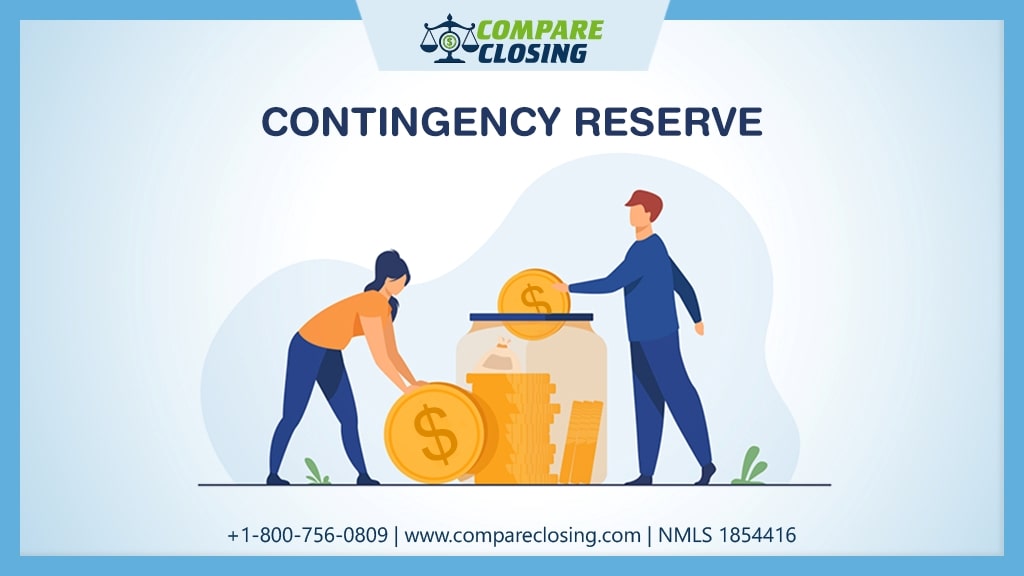Table of Contents
- What Are Netting Escrows & How Does It Work?: The Best Guide - January 2, 2024
- The Secret About Prescriptive Easement: Top Guide 1 Must Know - December 4, 2023
- About Home Equity Loans In Texas And How Can One Obtain It - November 27, 2023
Introduction
When it comes to planning for a project, many aspects are considered. One of the most significant parts of planning is contingency reserves.
In this post, we will learn what is a contingency reserve in detail.
What Is Contingency Reserve?
The contingency reserves are the retained earnings, which are segregated for future contingent losses, which are not available for distribution as a dividend and may be changed at any time depending on the situation.
It is usually estimated based on risk management methods.
These types of reserves are usually created in construction industries for their projects as it is a very turbulent industry that has multiple risk factors like government policies and inflation.
The contingency reserves are added to the cost of the project if they are used due to any of the factors.
What Is The Process Of Contingency Reserve?
Primarily, it is important to determine the risk factors that could arise in the future for a business, task, or project.
Based on the risk factors, calculate the amount that needs to be set aside in the reserve to cover those factors if the event occurs.
Open an account for the reserves through a bank and ensure that the reserve amount is transferred to this account periodically.
In an event of a contingency, you can withdraw the amount from this reserve account.
What Are The Different Methods To Calculate Contingency Reserves?
The top four methods to calculate contingency reserves are:
Deterministic Method: In this method, the reserve amount is calculated by determining the percentage of the risk factor and multiplying it by the cost involved to complete the project.
- Reserve amount = % of Contingency risk x project cost.
- Expert Judgement Method: In this method, to know the amount of reserve to set assist you just go by the judgment and experience of the financial planner that you are working with for a specific project.
- Probabilistic Method: In this way, the distribution of coverage is determined and from this coverage, the amount of reserve is determined based on the level of trust and experience of the owner.
- Expected Value Method: In this method, the reserve amount is derived by multiplying the impact of risk with the probability of the contingency.
Example Of Deterministic Method
Cost of Project: $250,000
Risk Contingency %: 20%
Project Period: 24 months
Amount of Reserves = % of Contingency risk x project cost.
= 250,000 x 20%
= 50,000.
Amount to be set aside every month in reserve account = Total amount of reserve / Number of months to complete the project
= 50,000/24
= 2083.33
In the above example, the project is required to transfer $2084 every month to the reserve account.
Why Are Contingency Reserves Used?
It is a matter of planning the business in such a way that the business is also not inconvenient and there is no shortage of money.
It helps to cope with unexpected losses. It provides a guarantee to investors with consistent and timely returns.
It helps withstand the industry even in difficult times. Reserves also protect the company from big losses and take into account the impact of inflation and other changes.
Contingency reserves protect the business from huge losses. This often happens in fast-changing and risky industries, such as insurance companies, share markets, real estate, and so on.
This indicates to the shareholders that the company has created sufficient reserves and any amount remaining after the reserve will be returned in form of dividends to shareholders. It gives shareholders a sense of security and trust.
In some cases, the creation of a reserve is an essential part of the business, as in the case of the insurance industry.
The creation of a provision is therefore necessary to cover the cost of an unforeseen event that will occur in the future.
This minimizes the risk because, in the event of an increase in costs or unforeseen losses of the business, the entity can use this provision to reduce the risk of bankruptcy or lack of funds.
Conclusion
It is important to have a reserve in case of difficult market situations. Reserves are the best way to afloat your business in a challenging situation like a major loss, inflation, or unexpected expenses.
Speak to your financial planner to understand the risk factors so that you can anticipate the amount of reserves you need to set aside.
Amanda Byford
Amanda Byford has bought and sold many houses in the past fifteen years and is actively managing an income property portfolio consisting of multi-family properties. During the buying and selling of these properties, she has gone through several different mortgage loan transactions. This experience and knowledge have helped her develop an avenue to guide consumers to their best available option by comparing lenders through the Compare Closing business.





